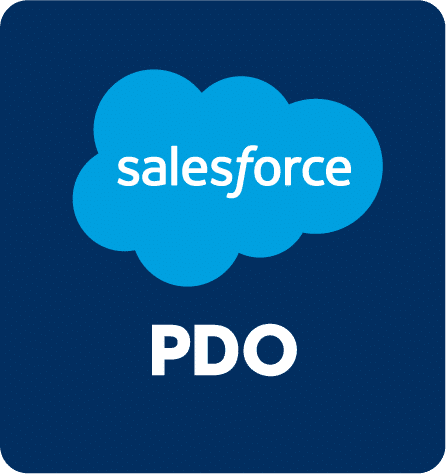
- Cloud-Based Application
Emerging Trends in Cloud-Based Application Development
Developing applications on the cloud is one of the newest and most practical strategies for expanding your company!
Cloud-based solutions, which enable seamless scalability, flexibility, and improved data management, have completely changed the way businesses function in today’s rapidly evolving technology landscape. The field of cloud-based application development is undergoing dynamic changes and breakthroughs that are redefining software solutions as long as enterprises value digital transformation.
This blog will address the new developments that are propelling the development of cloud-based applications, emphasizing important takeaways and tactics that companies can use to maintain an advantage in a market that is becoming more and more competitive.
Come explore the most recent developments and game-changing strategies with Advayan, that are driving the field of cloud-based application development into previously unheard-of levels of efficiency and growth.
Table Of Content
- What Is Cloud-Based Application Development?
- Modern Cloud Platforms Simplify Cloud-Based Application Development
- The Salesforce Platform gives you the power
- What are the Major Emerging Trends in Cloud-Based Application Development?
- Conclusion
What Is Cloud-Based Application Development?
As you may already be aware, developing cloud-based applications is one of the keystones for companies looking to harness the power of the cloud. The development, implementation, and administration of applications that make use of cloud computing resources are made possible by this creative strategy.
The process of designing and implementing software applications that are intended to run on cloud infrastructure is known as cloud application development. Cloud apps, which offer unmatched flexibility and scalability, may be used from any location with an internet connection, in contrast to traditional on-premises software.
Leveraging cloud-based services, including Platform as a Service (PaaS) and Software as a Service (SaaS), to design, test, and deploy applications smoothly is one of the key components of developing cloud apps. Cloud platforms such as Google Cloud, Microsoft Azure, and Amazon Web Services (AWS) are available for use by developers.
Moreover, agile development approaches are made easier by the collaborative nature of cloud application development, enabling teams to collaborate, iterate rapidly, and produce applications effectively. This strategy shortens the time it takes for new goods and services to reach the market while promoting innovation.
Cloud application development, with its focus on scalability, flexibility, and collaboration, is driving the digital transformation process and enabling businesses to remain competitive in an increasingly connected and dynamic corporate environment. Businesses who follow this trend will be able to improve user experiences, optimize processes, and achieve long-term success in the digital era.
Modern Cloud Platforms Simplify Cloud-Based Application Development
1. Low-code frameworks: Modern cloud platforms are increasingly integrating low-code development frameworks, enabling developers to create applications with minimal manual coding. These platforms offer intuitive drag-and-drop interfaces and pre-built templates, allowing for faster development cycles and reduced reliance on traditional programming expertise.
2. Data integration: Cloud-based application development is now seamlessly incorporating robust data integration capabilities. Developers can effortlessly connect disparate data sources, including on-premises systems and cloud-based databases, facilitating efficient data management and enhancing the overall user experience. Streamlined data integration empowers businesses to leverage comprehensive data insights and make informed decisions.
3. Cloud-based development: The shift to cloud-based development has revolutionized the application development landscape. Developers can now leverage scalable cloud infrastructure to build, test, and deploy applications rapidly. This approach provides enhanced flexibility and accessibility, enabling teams to collaborate seamlessly across different locations and time zones. Cloud-based development environments foster increased agility, scalability, and overall efficiency in the application development lifecycle.
The Salesforce Platform gives you the power
The Salesforce Platform gives you the power to revolutionize your business operations with its robust and dynamic cloud-based application development capabilities. As emerging trends in the tech industry continue to shape the landscape, the Salesforce Platform stands as a beacon of innovation, providing unparalleled tools and resources for creating scalable and adaptable applications.
With its user-friendly interface and comprehensive suite of features, the platform empowers developers and businesses to streamline their workflows, enhance customer experiences, and drive sustainable growth. By leveraging the Salesforce Platform, businesses can stay at the forefront of the rapidly evolving cloud-based application development landscape, ensuring a competitive edge in today’s digital marketplace.
What are the Major Emerging Trends in Cloud-Based Application Development?
1. Serverless Architecture and Function-as-a-Service (FaaS) Paradigm:
Serverless architecture, also known as Function-as-a-Service (FaaS), is gaining traction in cloud-based application development due to its scalability and cost-efficiency. With serverless computing, developers can focus solely on writing code without the need to manage the underlying infrastructure. This paradigm allows for the automatic scaling of resources, ensuring that applications can handle varying workloads without the need for manual intervention. By leveraging serverless computing, developers can streamline the development process, reduce operational costs, and create more agile and responsive applications.
2. Containerization and Microservices for Agile Application Deployment:
Containerization, along with the microservices architecture, has revolutionized the way developers deploy applications in the cloud. By encapsulating an application within a container, developers can ensure that the application runs consistently across different computing environments. This approach facilitates the development of modular and independent microservices, enabling teams to deploy, scale, and update specific parts of an application without affecting the entire system. By embracing container orchestration tools such as Kubernetes or Docker Swarm, developers can achieve efficient and streamlined cloud-based development workflows.
3. Integration of Artificial Intelligence and Machine Learning in Cloud Applications:
The integration of Artificial Intelligence (AI) and Machine Learning (ML) technologies in cloud applications has become a prominent trend, enabling developers to enhance user experiences and extract valuable insights from data. By leveraging AI and ML algorithms, developers can create intelligent applications capable of processing and analyzing large datasets, predicting user behaviors, and providing personalized experiences. Integrating AI and ML capabilities into cloud applications can lead to improved decision-making, predictive analytics, and the automation of complex tasks, ultimately enhancing the overall functionality and user engagement of cloud-based applications.
4. Security and Compliance Challenges in Cloud-Based Application Development:
With the increasing adoption of cloud-based applications, ensuring robust security and compliance measures has become a critical concern for developers. Protecting sensitive data, maintaining regulatory compliance, and safeguarding against cyber threats are essential considerations in cloud-based application development. Developers must implement security best practices such as data encryption, access control mechanisms, and regular security audits to protect data integrity and user privacy. Additionally, adherence to industry-specific compliance standards such as GDPR, HIPAA, and PCI DSS is crucial to maintaining the trust of users and adhering to legal requirements.
5. Edge Computing and its Role in Enhancing Cloud Application Performance:
Edge computing has emerged as a vital component in cloud-based application development, particularly in addressing the challenges of latency and performance. By bringing computation and data storage closer to the location where it is needed, edge computing reduces latency and enhances the responsiveness of cloud applications. Developers can optimize application performance by offloading certain tasks to edge devices, thereby minimizing the need for data to travel long distances to centralized servers. Integrating edge computing into cloud-based systems enables developers to create more responsive, real-time applications that deliver improved user experiences and support various use cases such as IoT, augmented reality, and autonomous vehicles.
Conclusion
In summary, the development of cloud-based applications is constantly changing due to a variety of cutting-edge developments that have revolutionized the creation, implementation, and management of applications.
Developers and companies need to stay up to date with the newest trends influencing the cloud computing space as more and more organizations explore its potential. The goal is still to improve user experiences, maximize performance, and guarantee strong security measures, whether through the deployment of serverless architectures and microservices or the incorporation of AI and ML capabilities. Adapting to these new trends helps companies stay competitive in the ever-changing digital market while also empowering developers to construct scalable, agile, and intelligent applications.
Subscribe to our blogs, to avail such more insightful information covering the world of salesforce technology!







